
Phone: 212 520 1686
Email: info@yourcpf.org
GROSS MOTOR SEVERITY
Cerebral Palsy (CP) describes a group of permanent disorders of the development of movement and posture, causing activity limitations, attributed to non progressive disturbances that occurred in the developing fetal or infant brain. The motor disorders of cerebral palsy are often accompanied by disturbances of sensation, perception, cognition, communication and behavior, epilepsy, and by secondary musculoskeletal problems.
-
MOST CHILDREN
WITH CP WILL WALK -
60%
WILL WALK WITHOUT
THE USE OF AN AID -
10%
WILL WALK WITH AN AID
-
30%
WILL USE A WHEELCHAIR
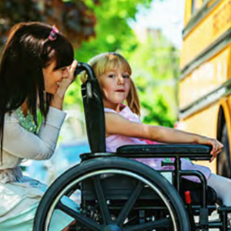
GMFCS E & R DESCRIPTORS AND ILLUSTRATIONS FOR CHILDREN AGES 6 – 12 YEARS
-
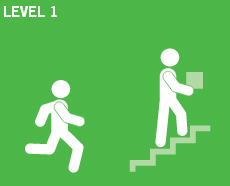 Children walk at home, school, outdoors, and in the community. They can climb stairs without the use of railing. Children perform gross motor skills such as running and jumping, but speed, balance and coordination are limited.
Children walk at home, school, outdoors, and in the community. They can climb stairs without the use of railing. Children perform gross motor skills such as running and jumping, but speed, balance and coordination are limited. -
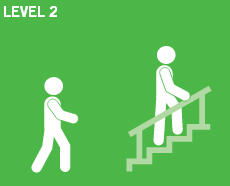 Children walk in most settings and climb stairs holding onto railing. They may experience difficulty walking long distances and balancing on uneven terrain, inclines, in crowded areas or confined spaces. Children may walk with physical assistance, a hand-held mobility device or use wheeled mobility over long distances. Children have only minimal ability to perform gross motor skills such as running and jumping.
Children walk in most settings and climb stairs holding onto railing. They may experience difficulty walking long distances and balancing on uneven terrain, inclines, in crowded areas or confined spaces. Children may walk with physical assistance, a hand-held mobility device or use wheeled mobility over long distances. Children have only minimal ability to perform gross motor skills such as running and jumping. -
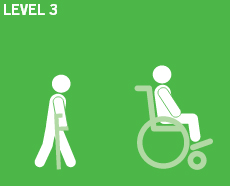 Children walk using a hand-held mobility device in most indoor settings. They may climb stairs holding onto a railing with supervision or assistance. Children use wheeled mobility when traveling long distances and may self-propel for shorter distances.
Children walk using a hand-held mobility device in most indoor settings. They may climb stairs holding onto a railing with supervision or assistance. Children use wheeled mobility when traveling long distances and may self-propel for shorter distances. -
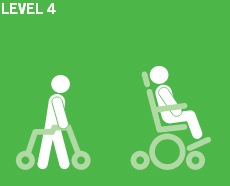 Children use methods of mobility that require physical assistance or powered mobility in most settings. They may walk for short distances at home with physical assistance or use powered mobility or a body support walker when positioned. At school, outdoors and in the community children are transported in a manual wheelchair or use powered mobility
Children use methods of mobility that require physical assistance or powered mobility in most settings. They may walk for short distances at home with physical assistance or use powered mobility or a body support walker when positioned. At school, outdoors and in the community children are transported in a manual wheelchair or use powered mobility -
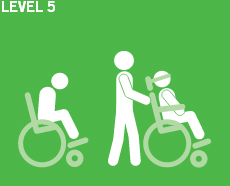 Children are transported in a manual wheelchair in all settings. Children are limited in their ability to maintain antigravity head and trunk postures and control leg and arm movement.
Children are transported in a manual wheelchair in all settings. Children are limited in their ability to maintain antigravity head and trunk postures and control leg and arm movement.
GMFCS Descriptors: Palisano et al (1997) Developmental Medicine and Child Neurology 39:214–23






